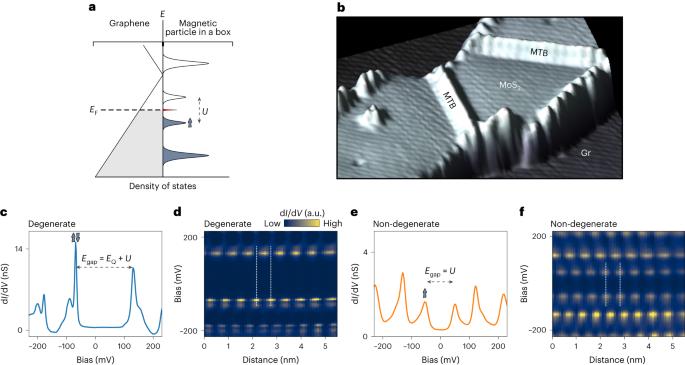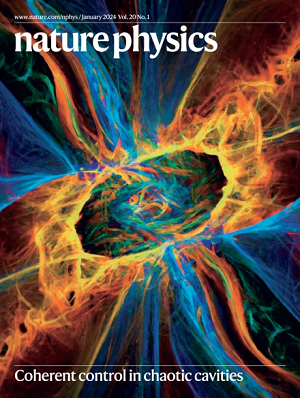单元化二硫化钼中沿磁镜孪晶界调制近藤筛分
IF 17.6
1区 物理与天体物理
Q1 PHYSICS, MULTIDISCIPLINARY
引用次数: 0
摘要
当单个电子被限制在金属中的杂质态时,如果电子浴屏蔽杂质的磁矩,则在费米能量处出现多体共振。这就是近藤效应,最初被引入来解释块状磁性合金的异常电阻率行为,在过去的几十年里,它已经在许多量子系统中实现,从重费米子晶格到吸附的单原子。在这里,我们描述了一个近藤系统,使我们能够通过实验解决光谱函数组成的杂质水平和近藤共振在一个大的近藤温度范围内,以及他们的空间调制。我们的方法是基于二硫化钼晶界内的离散半填充量子限制态,它与数值重整化群计算相结合,使我们能够测试安德森模型的预测能力,这是微观理解近田物理学的基础。本文章由计算机程序翻译,如有差异,请以英文原文为准。

Modulated Kondo screening along magnetic mirror twin boundaries in monolayer MoS2
When a single electron is confined to an impurity state in a metal, a many-body resonance emerges at the Fermi energy if the electron bath screens the impurity’s magnetic moment. This is the Kondo effect, originally introduced to explain the abnormal resistivity behaviour in bulk magnetic alloys, and it has been realized in many quantum systems over the past decades, ranging from heavy-fermion lattices down to adsorbed single atoms. Here we describe a Kondo system that allows us to experimentally resolve the spectral function consisting of impurity levels and a Kondo resonance in a large Kondo temperature range, as well as their spatial modulation. Our approach is based on a discrete half-filled quantum confined state within a MoS2 grain boundary, which—in conjunction with numerical renormalization group calculations—enables us to test the predictive power of the Anderson model that is the basis of the microscopic understanding of Kondo physics. Interactions between a localized magnetic moment and electrons in a metal can produce an emergent resonance that affects the metal’s properties. A realization of this Kondo effect in MoS2 provides an opportunity to study it in microscopic detail.
求助全文
通过发布文献求助,成功后即可免费获取论文全文。
去求助
来源期刊

Nature Physics
物理-物理:综合
CiteScore
30.40
自引率
2.00%
发文量
349
审稿时长
4-8 weeks
期刊介绍:
Nature Physics is dedicated to publishing top-tier original research in physics with a fair and rigorous review process. It provides high visibility and access to a broad readership, maintaining high standards in copy editing and production, ensuring rapid publication, and maintaining independence from academic societies and other vested interests.
The journal presents two main research paper formats: Letters and Articles. Alongside primary research, Nature Physics serves as a central source for valuable information within the physics community through Review Articles, News & Views, Research Highlights covering crucial developments across the physics literature, Commentaries, Book Reviews, and Correspondence.
 求助内容:
求助内容: 应助结果提醒方式:
应助结果提醒方式:


